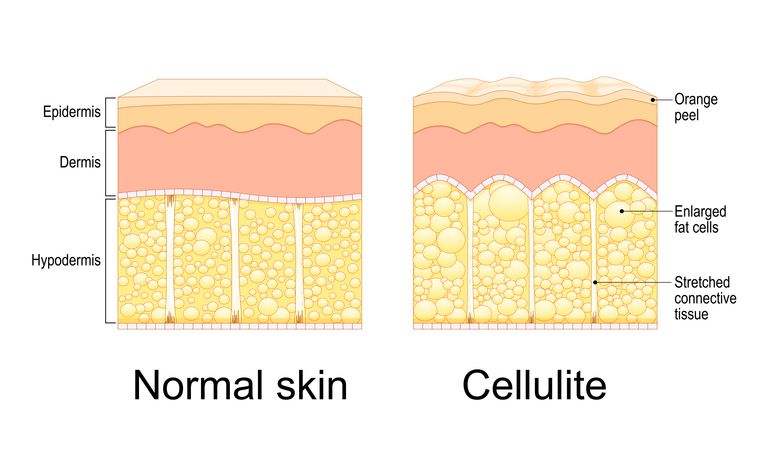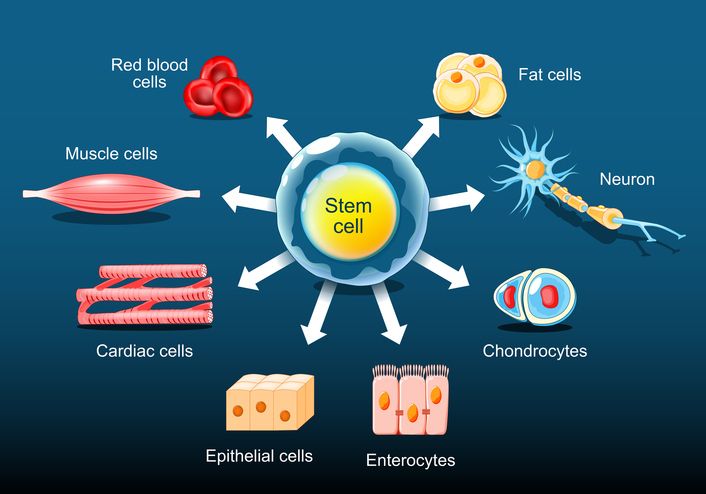
Author: Natalie Ng|Updated: 26 May 2025
If your skin stays red for more than a day, burns while applying the product, or develops bumps that don’t fade after a couple of days, your hair removal method might be too harsh for your sensitive skin. You might also notice tenderness, dark spots, dry patches, or recurring ingrown hairs—these are all signs that your skin’s barrier could be under stress. Hair removal for sensitive skin can be challenging. From hair removal creams to shaving, or even other hair removal methods, it’s easy to end up with irritation if the product or technique isn’t the right fit. Some formulas might be too strong, while others might not give your skin the care it needs. Keep reading to learn how to spot when your hair removal routine is too harsh—and what you can do to avoid it.

Sign 1: Redness That Lasts Over 24 Hours After Hair Removal

Why your skin stays red after hair removal
Redness after hair removal is normal, but if it lasts more than a day, it could mean your skin is reacting to a product or method that’s too harsh. Hair removal creams, like veet hair removal cream, can cause skin sensitivity if they include ingredients like calcium hydroxide or cetearyl alcohol. The risk is higher with sensitive areas like the bikini line, legs, and arms.
Signs your hair removal method is too harsh
If your skin feels hot, stays red, and has small bumps that don’t fade, your hair removal method may not be suitable for sensitive skin. A burning sensation that persists after using a hair removal cream or other methods is a sign to switch to a gentler approach.
How to calm redness after hair removal
Wait at least 48 hours between hair removal sessions. Rinse with cold water and use a soothing product like aloe vera, coconut oil, or a sensitive skin formula. Always do a patch test before trying a new product, especially if it has strong ingredients or a strong scent. If you notice a skin reaction, gently remove the product with a damp washcloth or warm washcloth and avoid using harsh products on the area.

Sign 2: Burning or Stinging During Hair Removal
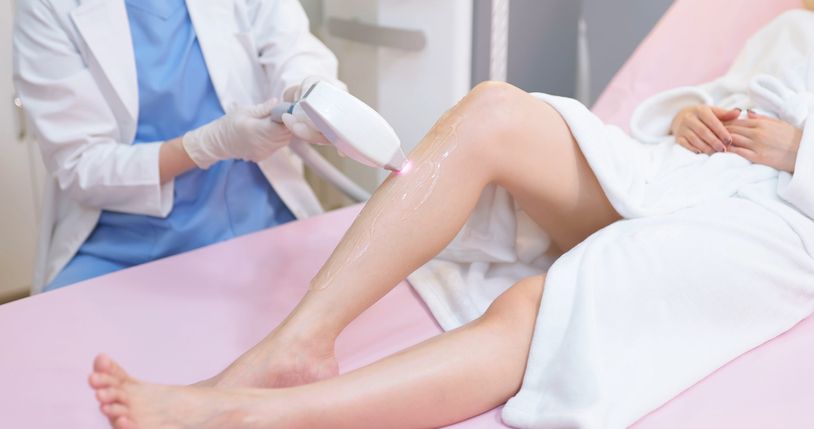
Why burning or stinging happens with hair removal products
Burning or stinging during hair removal is a clear sign that your skin is reacting badly to the product or method. Sensitive skin can be easily irritated by harsh chemicals in some hair removal creams, like calcium hydroxide or sodium benzoate. A burning sensation usually means the formula is too strong for your skin type, or the product is not suitable for sensitive areas like the bikini line, legs, arms, or face.
What to do when burning or stinging starts
If you feel sharp pain, stinging, or heat right after applying a hair removal product, rinse the area immediately with cold water and a damp washcloth. Avoid scrubbing. Apply aloe vera or coconut oil to soothe the skin, but avoid perfumed products or anti-perspirants that could make irritation worse.
How to prevent burning or stinging
Always perform a patch test 24 hours before using a new hair removal cream or method, especially if you have sensitive skin. Look for products made for sensitive skin that include soothing ingredients like aloe vera and vitamin e. If burning or stinging persists, stop using the product and switch to gentler hair removal methods that work better for your skin type.
Read More
Book Now to Experience
A3 Laser Hair Removal Treatment
1 Minute Self-Registration
Date should not be before minimal date

Sign 3: Lingering Heat and Redness After Hair Removal
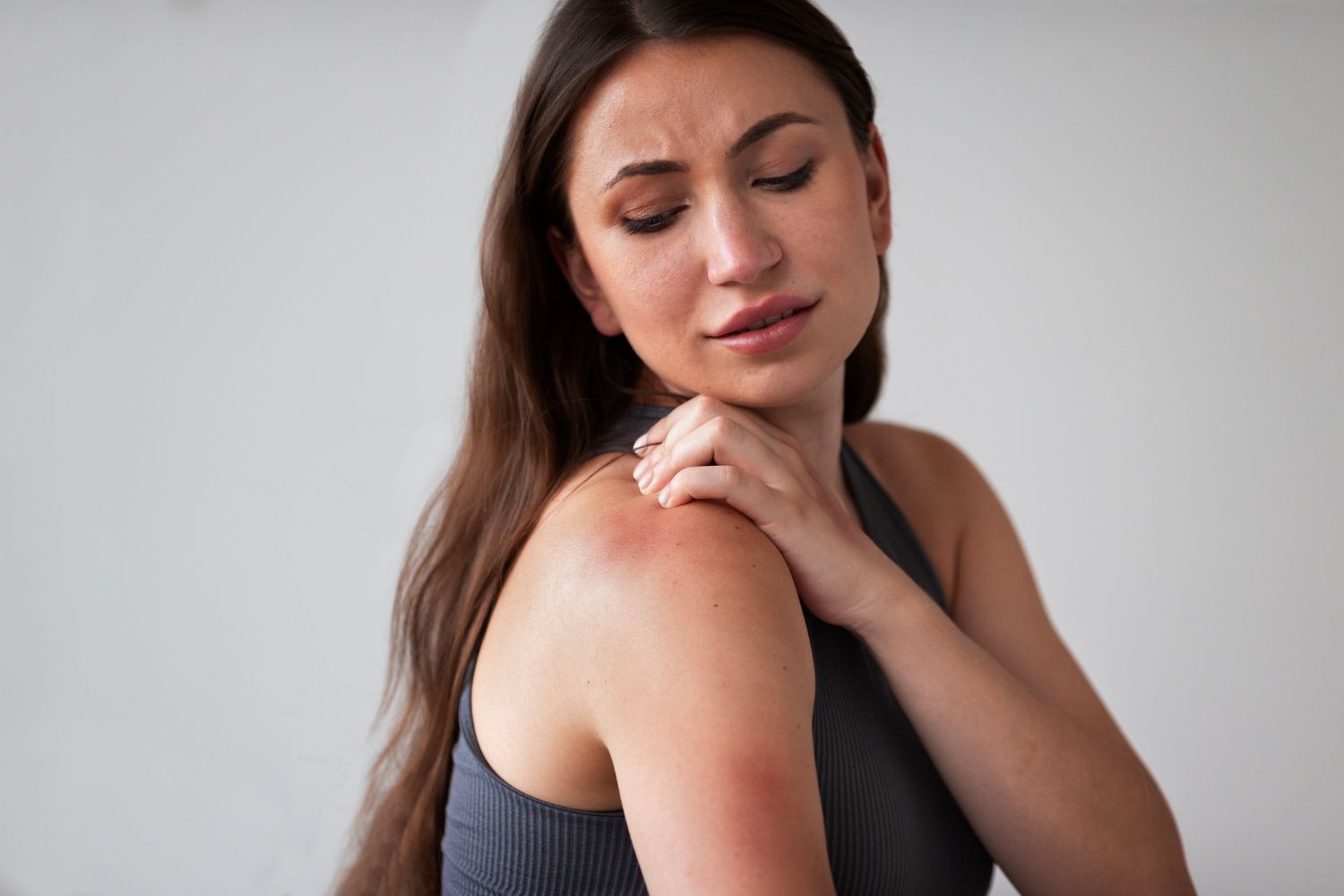
Why heat and redness stay after hair removal
It’s normal to have a little warmth or redness right after hair removal, but if your skin stays hot or red for longer than 30 minutes, that’s a warning sign. This often happens when a product or method is too harsh for sensitive skin. Ingredients like calcium hydroxide or cetearyl alcohol in hair removal creams can irritate skin, especially if used too often or on delicate areas like the bikini line or face.
What lingering redness tells you about your skin
When your skin stays red and warm long after hair removal, it’s telling you the method is causing irritation. You might also notice small bumps, a stinging sensation, or tenderness to the touch. These signs mean your skin barrier could be damaged, leading to further issues like dryness, dark spots, or even a chemical burn if not addressed.
How to reduce heat and redness safely
Apply a cool compress, like a damp washcloth or a cloth soaked in cold water, to help soothe the area. Avoid rubbing or applying scented lotions, as they can make the irritation worse. Choose hair removal methods that are designed for sensitive skin, and check labels for ingredients like aloe vera, coconut oil, or vitamin e to support recovery. If you experience prolonged redness, wait a few days before your next hair removal session to let your skin recover fully.

Sign 4: Bumps or Breakouts That Last for Days After Hair Removal
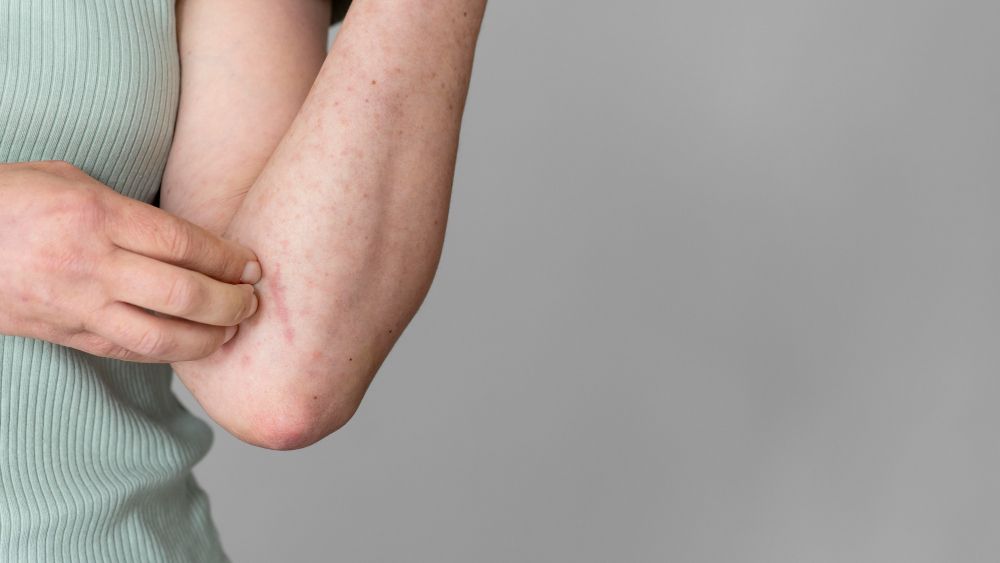
Why bumps or breakouts happen after hair removal
Bumps that stick around for more than 48 hours after hair removal can signal that your method is too harsh for sensitive skin. These small, red, and sometimes painful bumps form when hair removal techniques damage the skin barrier or irritate the hair follicles. Using hair removal creams with strong ingredients like sodium benzoate, or removing hair too often, can increase the risk of breakouts, especially in areas like the bikini line, legs, or face.
Signs you need to switch to a gentler hair removal method
Watch for small clusters of bumps that don’t fade, whiteheads forming in the treated area, or skin that stays hot and tender for days. Dark spots or patches that appear after the bumps heal are also a sign of skin trauma. If scabs form and take over a week to heal, your skin may need a break from harsh methods.
How to prevent bumps and breakouts
Switch to hair removal products made for sensitive skin and always do a patch test first. Give your skin at least 48 hours between hair removal sessions to heal fully. After removing hair, use a cool compress and apply a soothing product like aloe vera or coconut oil. Avoid exfoliating the area right after treatment, as it can make irritation worse.
Book Now to Experience
A3 Laser Hair Removal Treatment
1 Minute Self-Registration
Date should not be before minimal date

Sign 5: Skin Feels Raw or Tender After Hair Removal
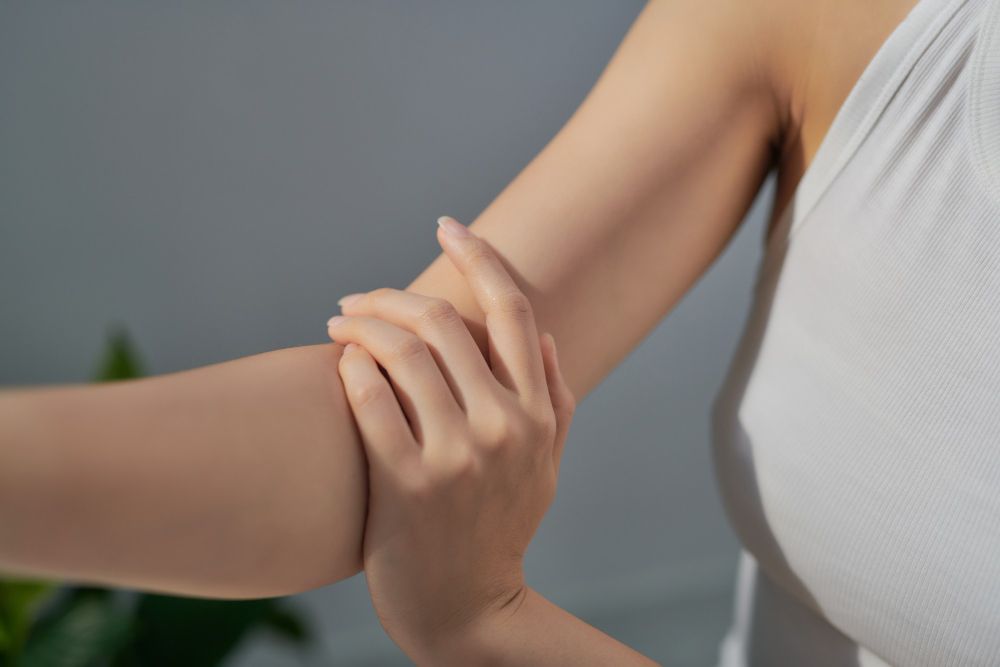
Why your skin feels raw or tender after hair removal
Raw or tender skin after hair removal often happens when the method or product is too harsh for sensitive skin. Waxing, strong hair removal creams, and other hair removal methods can damage the skin barrier, especially if used on sensitive areas like the bikini line, legs, or arms. This can leave the skin feeling like it has a mild sunburn, with redness, warmth, and discomfort lasting from 2 to 24 hours or even longer.
What raw and tender skin tells you
If your skin feels unusually sensitive, almost painful to touch, or stings for hours after hair removal, it’s a sign you’re overdoing it. This reaction often means the product or method is stripping away more than just unwanted hair—it’s also affecting your skin’s natural barrier.
How to ease raw and tender skin
Apply a cool compress or rinse the area with cold water to calm the skin. Choose aftercare products with soothing ingredients like aloe vera and vitamin e. Wait at least 24 to 48 hours before your next hair removal session. Avoid strong products like anti-perspirants or perfumed creams until the skin heals. If you’re using a depilatory cream, always follow the recommended time and never leave it on for too long. A patch test before each use can also help prevent reactions like this.

Sign 6: Dark Spots or Hyperpigmentation After Hair Removal

Why dark spots form after hair removal
Dark spots or hyperpigmentation can appear when hair removal methods irritate sensitive skin. Aggressive techniques, like waxing or using hair removal creams with harsh chemicals such as calcium hydroxide or sodium benzoate, can damage the skin barrier. This damage can lead to post-inflammatory hyperpigmentation, especially if your skin type is prone to it. Sun exposure after hair removal can make dark spots more noticeable, as treated skin is more sensitive to UV rays.
How to reduce dark spots and protect sensitive skin
If you see dark patches forming after hair removal, stop using the current method and give your skin time to heal. Apply aloe vera, coconut oil, or products with vitamin e to support recovery. Always wear sunscreen on exposed areas after hair removal, especially if you’re treating areas like the face, arms, or legs. Gentle hair removal options like sensitive skin formulas or trimming can help prevent dark spots in the future.
Book Now to Experience
A3 Laser Hair Removal Treatment
1 Minute Self-Registration
Date should not be before minimal date

Sign 7: Dryness and Flaking After Hair Removal
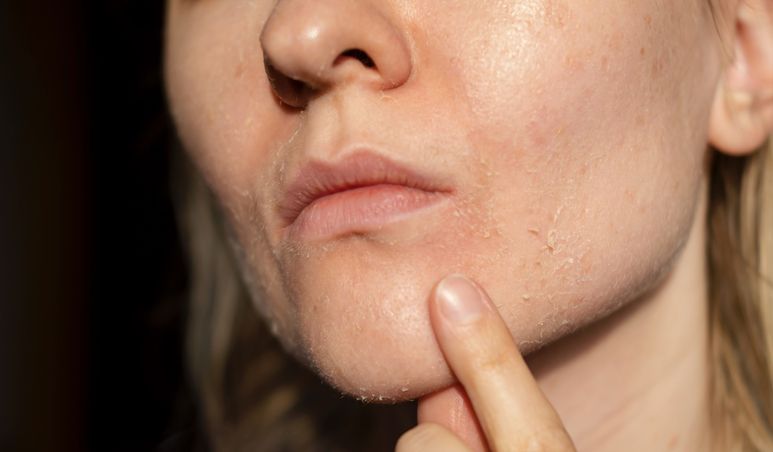
Why dryness and flaking happen after hair removal
Hair removal can strip away the skin’s natural oils, leading to dryness and flaking, especially for sensitive skin. Harsh hair removal creams, waxing, or over-shaving can damage the skin barrier, causing tightness, rough patches, and visible flakes. Ingredients like sodium benzoate or calcium hydroxide in depilatory creams may worsen the dryness, while skipping post-treatment care leaves the skin vulnerable to moisture loss.
How to prevent dryness and flaking
Apply a hydrating product like aloe vera or coconut oil immediately after hair removal to restore moisture. Look for products that include soothing ingredients like shea butter, vitamin e, or aloe barbadensis leaf juice. Avoid hot showers and exfoliating the area for at least 48 hours after hair removal. Choose sensitive skin formulas that are fragrance-free to reduce the risk of irritation and keep your skin feeling silky smooth.

Sign 8: Ingrown Hairs and Inflammation After Hair Removal
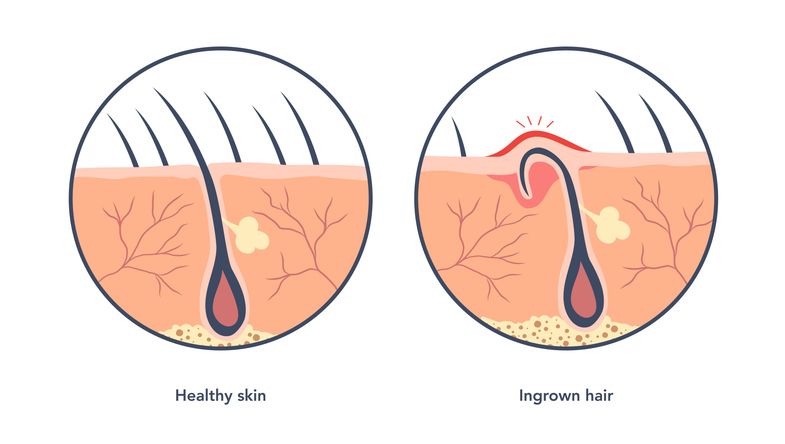
Why ingrown hairs and inflammation happen after hair removal
Ingrown hairs form when hair grows back into the skin instead of breaking through the surface. This can cause painful bumps, redness, and inflammation, especially for those with sensitive skin or coarse hair types. Aggressive hair removal methods like waxing, epilating, or using depilatory creams too often can increase the risk of ingrown hairs. Skipping exfoliation or using products that clog pores, such as perfumed products or heavy creams, can also make it worse.
How to reduce ingrown hairs and soothe inflammation
To help prevent ingrown hairs, exfoliate the area 24 hours before hair removal and apply a soothing product like aloe vera or coconut oil afterward. Avoid tight clothing that can cause friction in areas like the bikini line or legs. If you develop bumps or redness that won’t fade, stop hair removal for a few days to let your skin heal. For persistent ingrown hairs, try switching to a gentler method like trimming or using a single-blade razor.
Book Now to Experience
A3 Laser Hair Removal Treatment
1 Minute Self-Registration
Date should not be before minimal date

Sign 9: Skin Feels Tender or Hot for Several Days After Hair Removal

Why tenderness that lasts for days is a concern
Tenderness, heat, and irritation that linger for more than 48 hours are signs your hair removal method might be damaging your sensitive skin. While some warmth or redness right after hair removal is normal, symptoms that stick around for days suggest your skin barrier needs more recovery time. This can happen when using harsh hair removal creams, strong formulas, or methods that aren’t a good fit for sensitive areas like the bikini line, legs, or arms.
What prolonged tenderness means for your skin
If your skin feels warm, sore, or sensitive long after hair removal, it’s a signal to switch to gentler methods or products. Watch for signs like patches that stay red or hot to the touch, or areas that sting for more than two days. This type of lingering discomfort can lead to long-term irritation, dark spots, or scarring if not addressed.
How to soothe skin after extended tenderness
Cool the area with a cold, damp washcloth. Apply products with aloe vera, coconut oil, or vitamin e to help the skin heal. Skip further hair removal sessions for a few days and avoid using strong scents, anti-perspirants, or exfoliators in the affected area.

Sign 10: Hair Grows Back Thicker or Feels Rougher After Hair Removal
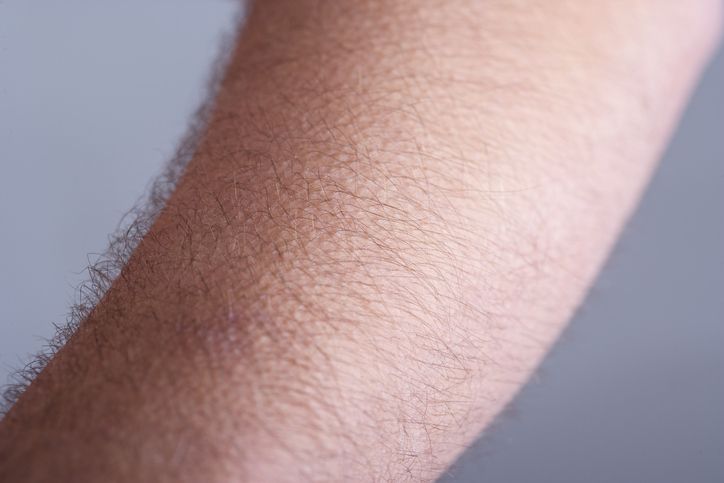
Why hair regrowth feels thicker after hair removal
If you notice your hair growing back thicker or feeling rough after hair removal, it could be a sign that the method you’re using is too harsh for sensitive skin. While hair itself doesn’t actually grow back thicker, irritation from aggressive hair removal methods can cause the hair shaft to feel coarse or uneven. This happens when the skin barrier is damaged, or when hair is removed too close to the surface without allowing proper healing.
What this means for sensitive skin
Rough regrowth can lead to more discomfort during future hair removal sessions, and it often makes hair removal feel more difficult over time. Sensitive areas like the bikini line, arms, or legs may be more prone to this issue, especially when using harsh depilatory creams, frequent shaving, or skipping post-treatment care.
How to avoid thicker-feeling regrowth
Use a hair removal method designed for sensitive skin and follow up with soothing products like aloe vera or vitamin e to nourish the skin. Try applying coconut oil or shea butter to lock in moisture and keep the skin soft. Gentle exfoliation 24 hours before your next session can help prevent ingrown hairs and keep hair growth feeling softer.
Book Now to Experience
A3 Laser Hair Removal Treatment
1 Minute Self-Registration
Date should not be before minimal date

How To Choose the Right Hair Removal Method for Sensitive Skin?

Importance of selecting gentle hair removal methods
For individuals with sensitive skin, the choice of hair removal method can significantly impact skin health. Harsh techniques may lead to irritation, redness, or prolonged discomfort. Understanding and selecting appropriate methods can help maintain the skin's natural barrier and reduce adverse reactions.
Recommended hair removal methods for sensitive skin
• Sugaring: A natural alternative to traditional waxing, sugaring uses a paste made from sugar, water, and lemon juice. This method adheres to hair rather than the skin, minimizing irritation and making it suitable for sensitive areas like the bikini line or underarms.
• Laser Hair Removal: This technique targets hair follicles with concentrated light, reducing hair growth over time. Modern devices often include cooling mechanisms to soothe the skin during treatment, making it a viable option for those with sensitive skin.
• Electric Shaving: Electric razors or trimmers can be gentler on the skin compared to manual razors. They reduce the risk of cuts and razor burns, especially when used with products designed for sensitive skin.
• Depilatory Creams for Sensitive Skin: Some hair removal creams are formulated specifically for sensitive skin, containing milder ingredients and soothing agents like aloe vera and vitamin e. Always perform a patch test before full application to ensure compatibility.
Methods With Higher Risks
• Traditional Waxing: While effective, traditional waxing can be harsh on sensitive skin, potentially causing redness and inflammation. If choosing this method, opt for hypoallergenic waxes and consult with professionals experienced in treating sensitive skin.
• Manual Razor Shaving: Using manual razors can lead to razor burns, cuts, and ingrown hairs. If this method is preferred, ensure the use of sharp blades and shaving creams designed for sensitive skin to mitigate potential irritation.

How A3 Laser Hair Removal Treatment Helps Sensitive Skin
Why A3 Laser Hair Removal is a great option for sensitive skin
For anyone with sensitive skin, finding a hair removal method that won’t cause irritation, redness, or discomfort can feel like a challenge. Many common methods—like waxing, shaving, or harsh hair removal creams—can leave skin feeling sore, dry, or even cause burning sensations. That’s where the A3 Laser Hair Removal Treatment can make a real difference.
This treatment uses 808nm wavelength laser technology that penetrates deep into the skin, targeting the hair follicle directly. The energy focuses on the melanin in the hair shaft and helps shrink the tiny blood vessels that feed the hair root, stopping hair growth from the source. The A3’s wide 10mm x 10mm square tip allows the therapist to remove around 500 hair strands per second, making the treatment fast and effective—without needing multiple passes over the skin.
How the A3 Laser Hair Removal Treatment supports sensitive skin
The A3 Laser Hair Removal Treatment is designed with a built-in dual cooling system that helps keep the skin calm during the session. This cooling technology soothes the skin immediately after the laser passes over the area, reducing the chance of redness, burning sensations, and skin irritation. For those who have experienced discomfort with other hair removal methods, this makes a big difference.
The treatment works on both coarse and fine hair, and it’s safe for most skin types—including sensitive skin. Since the laser targets the root of the hair without damaging the surrounding skin, it reduces the risk of dark spots, scabbing, or long-term irritation. Plus, the process is non-invasive, so there’s no need for a long recovery period.
Benefits of A3 Laser Hair Removal for sensitive skin
• Helps prevent ingrown hairs by removing hair at the root
• Reduces the risk of redness, irritation, and dryness
• Supports silky smooth skin without the need for harsh creams or razors
• Works on sensitive areas like the bikini line, underarms, and legs
• Safe, non-invasive, and suitable for most skin types
Ready to try a gentler, more effective hair removal method?
Book your A3 Laser Hair Removal Treatment today and enjoy long-lasting results with less irritation. Get started on your journey to smoother, healthier skin—without the hassle of shaving, waxing, or harsh products!
New Beauty's A3 Laser Hair Removal TreatmentBook Now to Experience
A3 Laser Hair Removal Treatment
1 Minute Self-Registration
Date should not be before minimal date
FAQ
1. Can I use hair removal cream on sensitive areas like the bikini line and face?
Yes, but with caution. When using hair removal cream on sensitive skin or areas like the bikini line or face, always choose a sensitive skin formula. Look for products that include soothing ingredients like aloe vera or vitamin e, and avoid those with strong scents or harsh chemicals like calcium hydroxide. Always do a patch test 24 hours before application to check for skin sensitivity or any adverse reaction.
2. How often should I perform hair removal sessions if I have sensitive skin?
For sensitive skin, spacing out hair removal sessions is important to avoid irritation. It’s best to wait at least 48 to 72 hours between sessions, depending on the method used. If you’re using a hair removal cream, follow the product instructions carefully and avoid frequent applications to prevent skin sensitivity and dryness. For IPL hair removal treatment, a full course typically includes 6 to 12 sessions, spaced according to your skin’s response and hair growth cycle.
3. Will hair regrowth feel softer or coarser after hair removal for sensitive skin?
Many people find that after using gentle hair removal methods like IPL or a sensitive skin hair removal cream, hair regrowth feels softer and less coarse. This is because these methods weaken the hair follicle over time, slowing down hair growth and making new hair strands finer. In contrast, shaving or harsh treatments can make hair feel rougher as it grows back.
4. Can I use aloe vera and coconut oil after hair removal on sensitive skin?
Yes, both aloe vera and coconut oil have soothing properties that can help calm the skin after hair removal. Aloe barbadensis leaf juice (the form of aloe vera used in many skincare products) helps reduce redness, while coconut oil locks in moisture and helps prevent dry skin. Applying these products after hair removal, especially on sensitive areas like the bikini line or legs, can keep the skin feeling smooth and cared for.
5. How can I prevent ingrown hairs and dark spots after hair removal for sensitive skin?
To prevent ingrown hairs and dark spots after hair removal, gently exfoliate the skin 24 hours before hair removal to remove dead skin cells that can block hair follicles. After hair removal, avoid tight clothing that can cause friction, and always moisturize with products containing soothing ingredients like aloe vera or shea butter. For sensitive skin, using hair removal methods like IPL or depilatory creams designed for sensitive skin can also reduce the risk of dark spots and ingrown hairs.
Recommended Articles
COPYRIGHT© NEW BEAUTY MANAGEMENT LIMITED 2025. ALL RIGHT RESERVED.

